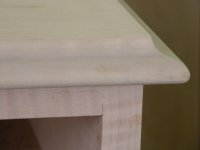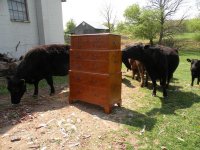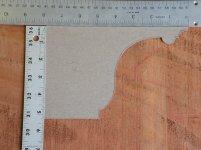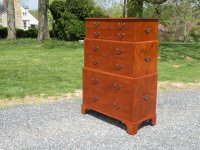Jeff L Headley
Well-known member
The top has a thumb mold cut on the two sides and the front edge. The top is screwed up! Screwed up through the top front and back rail on both left and right sides and in center from the front of the chest. I don't want anyone who will work on this piece in the future to have to take the back off to get to the screws to remove the top. The holes are large enough to allow a little movement seasonally. I will also drill holes through the center rail on the left and right side. Countersinking all the holes. I will even slightly countersink the top of the holes so shavings from the drill won't get between the top and case while screwing down the top. When screwing the top I will have the chest flipped upside down and clamped to my bench. This way when my screws which go in at an angle will not shift the top as you tighten them down. There will be plenty of time to screw thing up later. Again each section just sets on the one under it.




